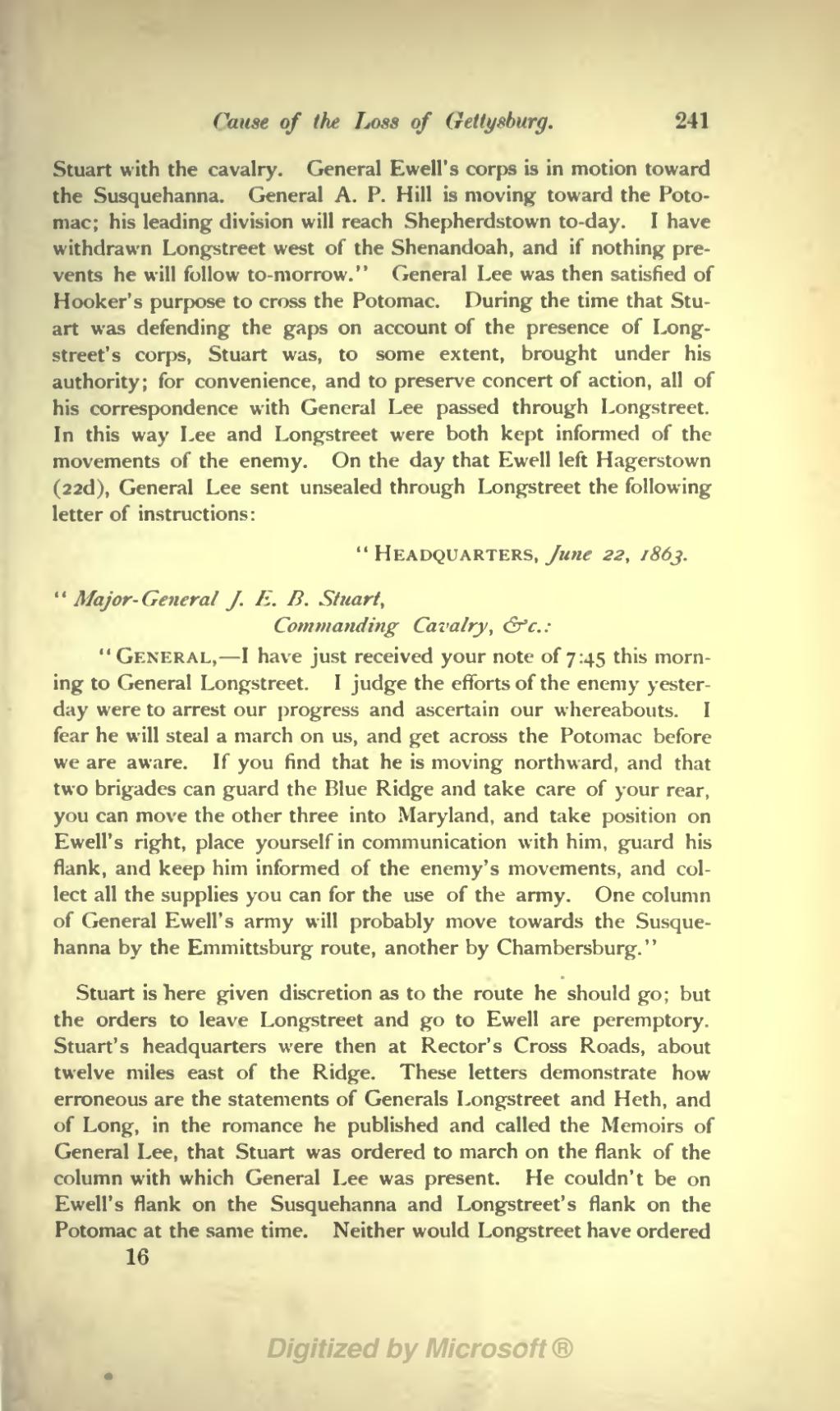Cause of the Loss of Gettysburg. -41
Stuart with the cavalry. General Swell's corps is in motion toward the Susquehanna. General A. P. Hill is moving toward the Poto- mac; his leading division will reach Shepherdstown to-day. I have withdrawn Longstreet west of the Shenandoah, and if nothing pre- vents he will follow to-morrow." ( ii-neral Lee was then satisfied of Hooker's purpose to cross the Potomac. During the time that Stu- art was defending the gaps on account of the presence of Long- street's corps, Stuart was, to some extent, brought under his authority; for convenience, and to preserve concert of action, all of his correspondence with General Lee passed through Longstreet. In this way Lee and Longstreet were both kept informed of the movements of the enemy. On the day that Ewell left Hagerstown (22d), General Lee sent unsealed through Longstreet the following letter of instructions:
" HEADQUARTERS, June 22, /86j.
1 ' Major- General J. E. B. Stuart,
Commanding Cavalry, &c.:
" GENERAL, I have just received your note of 7:45 this morn- ing to General Longstreet. I judge the efforts of the enemy yester- day were to arrest our progress and ascertain our whereabouts. I fear he will steal a march on us, and get across the Potomac before we are aware. If you find that he is moving northward, and that two brigades can guard the Blue Ridge and take care of your rear, you can move the other three into Maryland, and take position on Ewell's right, place yourself in communication with him, guard his flank, and keep him informed of the enemy's movements, and col- lect all the supplies you can for the use of the army. One column of General Ewell's army will probably move towards the Susque- hanna by the Emmittsburg route, another by Chambersburg. "
Stuart is here given discretion as to the route he should go; but the orders to leave Longstreet and go to Ewell are peremptory. Stuart's headquarters were then at Rector's Cross Roads, about twelve miles east of the Ridge. These letters demonstrate how erroneous are the statements of Generals Longstreet and Heth, and of Long, in the romance he published and called the Memoirs of General Lee, that Stuart was ordered to march on the flank of the column with which General Lee was present. He couldn't be on Ewell's flank on the Susquehanna and Longstreet' s flank on the Potomac at the same time. Neither would Longstreet have ordered 16

